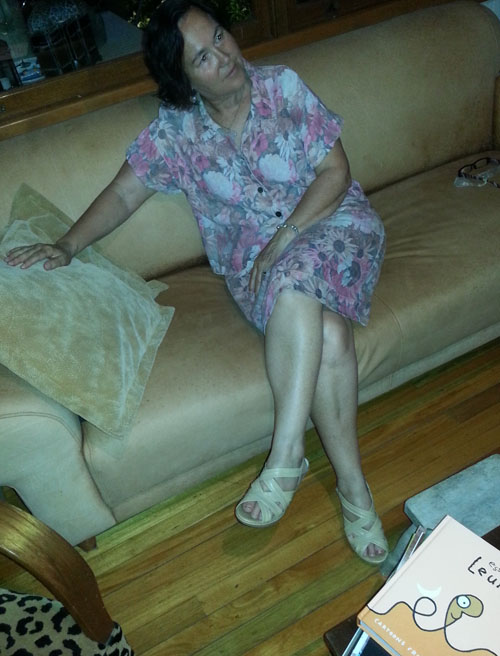 What is a reasonable lifespan for clothing? We know that food is perishable and has a shelf-life, but what about our clothes? Fashion has a contrived shelf-life of one season (or less) but what about classic and simple garments that don’t go out of date?
What is a reasonable lifespan for clothing? We know that food is perishable and has a shelf-life, but what about our clothes? Fashion has a contrived shelf-life of one season (or less) but what about classic and simple garments that don’t go out of date?
The variables to consider are – the quality of fabric and construction, how often you wash and wear them, whether your shape or needs change, and whether your taste and style moves on.
The act of throwing out clothing because it has literally worn out has become old-fashioned. How many know the experience of garments moving through the stiff-new beginning to become soft-with-age comfortable and rich with memories from many wears?
Alex Martin from Seattle wore the same Little Brown Dress every day for a year and it didn’t wear out. Karl Stefanovic from Sydney wore the same suit every day on air for a year and it was none the worse for wear. We do not need the billions of new garments that are produced every year, although we may be easily convinced that we want them.
In the United Kingdom there is a concerted effort to reduce textile waste and make their clothing footprint sustainable and ethical – through activities such as Fashion Revolution Day, the Green Carpet Challenge and #Secondhandfirst Week which is an initiative of fashion reuse charity TRAID.
On the other hand, British parliamentarians via the Sydney Morning Herald are poking fun at Australian Prime Minister Tony Abbott’s approach to climate change saying ‘conservatives are supposed to conserve, they are supposed to hand on to the next generation something better than they received themselves’.
At its simplest, the choices we make as individuals combine to create a difference in the world. Through this 365-day Sew it Again project, we are taking a second look at clothing that already exists in our wardrobes and opshops then making small changes to bring it back into service.
Sew 325 is a floral Irish linen look which I created for myself nearly two decades ago and has served me well during that time. It still fits and I still adore the coarse-woven floral fabric which is still fully intact. I’ve given it a second lease on life by upcycling it through a restyle – shortening the sleeves (just folded up, not cut) and taking down the hem (with the help of bias binding) for a more elongated look. There is a slight wear-line where the old hemline used to be, but I reckon that adds patina and is part of the story of this particular suit which has the potential to last me another two decades.

Hello I just found your blog via secondhand first week. It’s very inspiring!
Wonderful to keep clothing so long, and read the stories of their creation and life. I did this with my cardigan 🙂
http://fibreosmosis.blogspot.co.uk/2014/11/the-purple-cardigan.html?m=1
Hi Hannah, thanks for great feedback and love your blog. #secondhandfirst week is a great concept because it recognises and values clothing which already exists in the world. J
Hi Jen, I loved reading the story of your purple cardigan and so nice to connect with others who believe in reuse and repair. Jane
Thankyou so much Jane. It’s lovely to connect too. Love how you make everything look as if it was the most natural thing in the world to do. I really feel it is the way forward. I realise now, just how lucky I was to have had a mum who knitted and made all our clothes, and how many of her skills passed onto me without really noticing. She had me knitting and sewing before I went to school! She always used to rip down jumpers every few years and reknit them in various other ways. She was from Shetland, and for her, wool was precious and something to be cared for and used and reused in many ways. Those skills passed on, are what allow me to create for myself something from what some may think is nothing. Now, my daughter and I enjoy doing this together. The joy on her face when she finishes something for herself is priceless. Jen 🙂
We are lucky Jen to have the life-skills passed on by elders as well as the requisite motivation and time to invest in creative and functional reuse. J